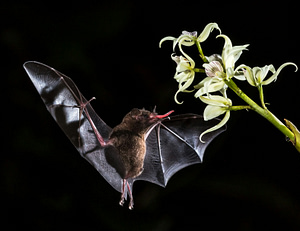By understanding the needs of those around them, businesses can harness the power of industrial symbiosis for significant economic, environmental, and social benefits.
At its heart, industrial symbiosis is geared around a simple idea: that one industry’s trash is another’s treasure. That is; rather than letting the excess material, water and energy generated by an industrial process go to waste, businesses should instead direct these resources to other sectors that need them.
The potential applications are almost endless – from channelling excess CO2 emissions from nitrogen production into greenhouses to grow tomatoes, to transferring waste chemicals from the manufacture of engine cooling systems to help in the recycling of aluminium. However, before dumping waste on to the doorstep of a neighboring business, it is important to check one thing: do they actually need it?
Plan for symbiosis
Before implementing an industrial symbiosis system, extensive planning is needed to understand the local circumstances. A prime example of this is in the Dutch province of Friesland, where the operators of the Netherlands’ largest drinking water treatment plant are taking a second look at the waste generated in the treatment of potable water.
Every day Vitens’ Spannenberg facility pumps millions of litres of water to over 300,000 people and companies across Friesland. To make the water suitable to drink, energy needs to be expended and significant quantities of impurities need to be filtered out – waste streams that could be put to use at neighboring businesses.

To identify opportunities for industrial symbiosis, Metabolic undertook an analysis of material flows at the Spannenberg facility.
Synergies with agriculture
Vitens is already redirecting waste streams internally – for instance using waste methane for electricity generation – and externally, by using fulvic acids as feed and soil conditioner and lime for poultry feed and fertilizer across the country and globally. Vitens is now looking how industrial symbiosis can implemented locally, bringing in Metabolic to see how best to optimize this approach. We’ve identified a range of opportunities – and the region’s extensive agriculture sector offers some of the most enticing synergies with the poultry feed and fertilizer solutions.
Other local synergies include using lime filtered out of the water to apply on farms to combat salinity in Friesland soil, which could further threaten local agriculture as sea levels rise due to climate change. These lime pellets could also be used to address acidic soils in natural ecosystems in the Veluwe and the Wadden Islands.
Pieter van Exter, our industries team lead and co-author of the report, says these solutions won’t just help the business models of Vitens and neighbouring agricultural operations – they can preserve the environment that sustains their respective industries.
“These farms are also located above groundwater sources from which Vitens extracts water, so it is in everybody’s interest to maintain strong relationships and keep the soil healthy,” he says.
Agriculture isn’t the only neighboring sector that could benefit. In nearby Groningen, a thriving hemp cultivation industry could offer synergies as well. “For instance it is possible to use hemp as a construction material by combining it with calcium carbonate [created from the lime extracted out of water] to make strong building bricks for circular construction,” van Exter says.
“You can gain a double win there because to turn lime pellets sourced from the water into calcium carbonate, you need to heat them, creating a very pure form of CO2, which can be redirected into the internal process, so the waste stream of Vitens can be reused as an input.”
Water to power windmills

One more speculative solution the report identified is using the trace metals extracted from the water that aren’t so useful to neighbors – yet. One example is the mineral boron, demand for which could rise in the Netherlands as it is a metal processed to be used in permanent magnets in the wind turbines needed for the Dutch to undertake the transition to clean energy. The long-term opportunity could be there for processors and even turbine manufacturers to move into the neighborhood to capitalize on the nearly 18 million euros worth of trace metals extracted from Vitens water annually.
Stable supply for the long term
As van Exter notes, stability of supply is a huge advantage to the establishment of a functioning industrial symbiosis system – and Vitens waste streams are resources that can be relied on for years to come.
“We are in turbulent times, but one thing for sure is that humanity will need drinking water for all of eternity,” he says. “So you know this plant will be there for a long time. That’s essential for industrial symbiosis – a stable supply, and a trustable source that will be there for the long term.”
Vitens business development manager Alexander Laarman underlines this statement: “Our job is to produce and distribute drinking water to our almost 6 million customers and local industries, which means also to protect our natural sources to do so. By using our by-products locally for a more sustainable environment and by interacting with local stakeholders, we as Vitens could add value locally.”
In other words, a neighbor you can count on.
To learn more about the Vitens project, read the report here, or get in touch with our industries team lead Pieter van Exter at [email protected] to find out how industrial symbiosis could work for your business.






